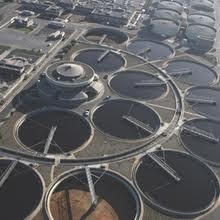As of the end of 2012, the number of sewage treatment plants in cities and counties in China was 3,340; sewage treatment capacity was approximately 142 million cubic meters / day, showing an increase of 6 million cubic meters / day compared with the end of 2011.
There are 648 cities establishing sewage treatment plants, accounting for 98.5% of the total number of cities; the cumulative number of sewage treatment plants is 1,947 (increased by 106 compared with the end of 2011); sewage treatment capacity is 117 million cubic meters / day (increased by 4.5 million cubic meters / day). Nine cities have not yet built sewage treatment plants, including Aershsan in Inner Mongolia Autonomous Region, Shangzhi, Wuchang, Mishan, Tieli, and Hailun in Heilongjiang Province, Lincang in Yunnan Province, Xigaze Tibet Autonomous Region, and Wujiaqu City in Xinjiang.
There are 1,254 counties establishing sewage treatment plants, accounting for 77.7% of the total number of county, increasing by 7.2% over the end of 2011. The cumulative number of sewage treatment plant is 1,393; sewage treatment capacity is 24.21 million cubic meters / day. 22 provinces, autonomous regions and municipalities in China have achieved the goal of “each county (city) has a sewage treatment plant”.
To Know More : Sewage Treatment Industry
There are 648 cities establishing sewage treatment plants, accounting for 98.5% of the total number of cities; the cumulative number of sewage treatment plants is 1,947 (increased by 106 compared with the end of 2011); sewage treatment capacity is 117 million cubic meters / day (increased by 4.5 million cubic meters / day). Nine cities have not yet built sewage treatment plants, including Aershsan in Inner Mongolia Autonomous Region, Shangzhi, Wuchang, Mishan, Tieli, and Hailun in Heilongjiang Province, Lincang in Yunnan Province, Xigaze Tibet Autonomous Region, and Wujiaqu City in Xinjiang.
There are 1,254 counties establishing sewage treatment plants, accounting for 77.7% of the total number of county, increasing by 7.2% over the end of 2011. The cumulative number of sewage treatment plant is 1,393; sewage treatment capacity is 24.21 million cubic meters / day. 22 provinces, autonomous regions and municipalities in China have achieved the goal of “each county (city) has a sewage treatment plant”.
To Know More : Sewage Treatment Industry

